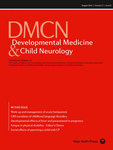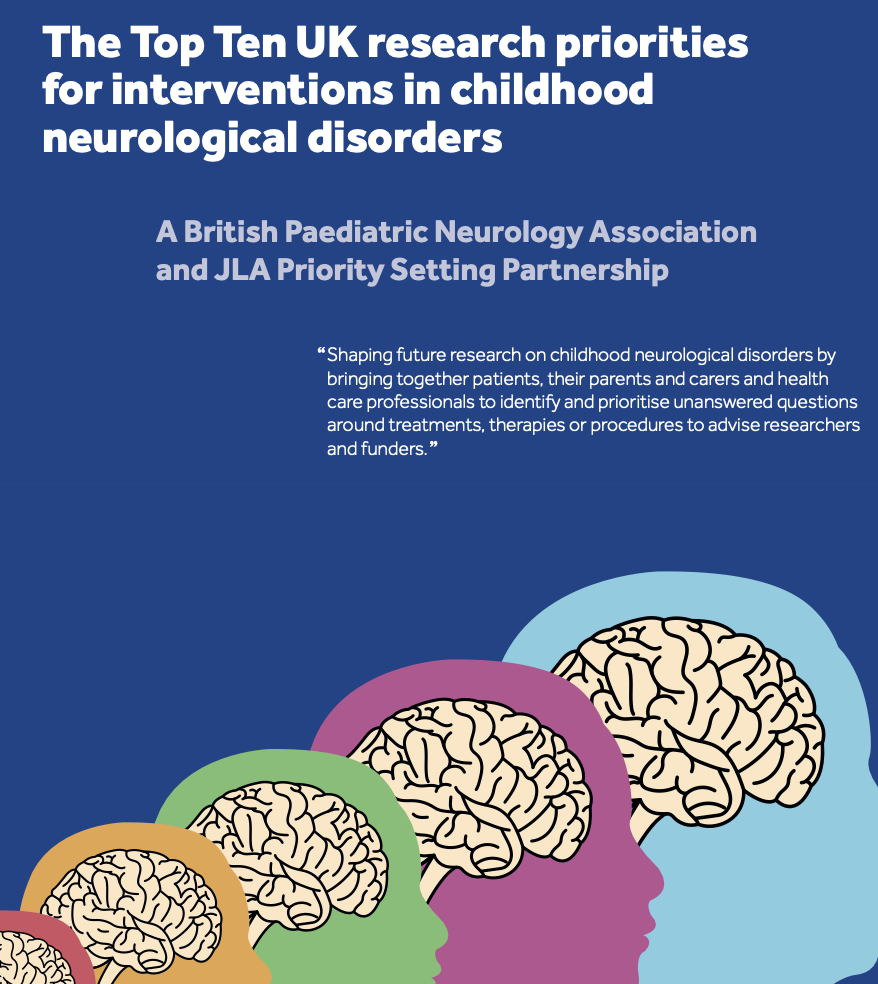Journal list menu
Export Citations
Download PDFs
Editorial
Clinical Update
A practical approach to acute hemiparesis in children
- Pages: 689-697
- First Published: 01 April 2015
- Acute hemiparesis in children is a clinical syndrome with diverse causes.
- A systematic approach including clinical data and neuroimaging can help establish accurate diagnosis.
Commentaries
Studying the effects of maternal febrile exposures on neurological outcomes in offspring: conceptual and methodological issues
- Pages: 698-699
- First Published: 15 April 2015
This commentary is on the original article by Holst et al. on pages 725–732 of this issue.
Are muscles weaker in children with neurofibromatosis type 1?
- Page: 699
- First Published: 29 April 2015
This commentary is on the original article by Cornett et al. on pages 733–736 of this issue.
Time to take notice: what about fatigue?
- Pages: 700-701
- First Published: 18 April 2015
This commentary is on the original article by Maher et al. on pages 742–747 of this issue.
Movement towards enhancing self-management and exercise prescription through use of the OMNI Walk/Run Rating of Perceived Exertion scale
- Pages: 701-702
- First Published: 22 March 2015
This commentary is on the original article by Fragala-Pinkham et al. on pages 748–753 of this issue.
Repeat botulinum toxin A injections: a step forward in the challenge to evaluate current clinical practice
- Pages: 702-703
- First Published: 18 April 2015
This commentary is on the original article by Lidman et al. on pages 754–761 of this issue.
Improving survival in cerebral palsy: where do we go from here?
- Pages: 703-704
- First Published: 09 March 2015
This commentary is on the original article by Himmelmann and Sundh on pages 762–767 of this issue.
A child with cerebral palsy: what difference does it make for parents?
- Pages: 704-705
- First Published: 27 February 2015
This commentary is on the original article by Michelsen et al. on pages 768–775 of this issue.
Reviews
Neural correlates of childhood language disorder: a systematic review
- Pages: 706-717
- First Published: 18 February 2015
- Atypical brain structure and/or function consistently reported in key language-related brain regions for language disorder groups.
- High variability in language disorder phenotype and magnetic resonance approaches limits ability to draw robust conclusions regarding brain asymmetry.
- Limited evidence to support reduced leftward structural and functional asymmetry in frontal language-related brain regions in language disorder groups.
Use of paracetamol during pregnancy and child neurological development
- Pages: 718-724
- First Published: 07 April 2015
- Animal data suggest that therapeutic doses of paracetamol may alter cognition and behaviour.
- Epidemiological studies suggest a weak to moderate association between antenatal exposure to paracetamol and neurodevelopment or attention-deficit–hyperactivity disorder, but limitations in the studies' design and weakness of the observed associations prevent causal inference.
- Given the current knowledge, paracetamol is still to be considered safe in pregnancy and should remain the first line for the treatment of pain and fever.
Original Articles
Fever during pregnancy and motor development in children: a study within the Danish National Birth Cohort
- Pages: 725-732
- First Published: 20 March 2015
- First study to investigate maternal fever during pregnancy in relation to motor development in the child.
- Demonstrates that maternal fever during pregnancy is associated with developmental coordination disorder at 7 years of age.
- The lack of a dose–response relationship suggests that this association is caused by the underlying causes of the fever.
This article is commented on by Hashmi on pages 698–699 of this issue.
Muscle weakness in children with neurofibromatosis type 1
- Pages: 733-736
- First Published: 23 April 2015
- Characterizes muscle weakness in children with neurofibramotosis type 1 (NF1) across a range of muscle groups.
- Highlights the persistence of this weakness throughout childhood.
- Data support evidence of NF1 being associated with a primary myopathy.
This article is commented on by D'Astous and Johnson on page 699 of this issue.
Valproate-induced enuresis: a prospective study
- Pages: 737-741
- First Published: 25 March 2015
- Enuresis is a common adverse event of valproate exposure in children.
- Enuresis rapidly resolves in all children after discontinuation of valproate.
- Enuresis also resolves eventually in the vast majority of children maintained on valproate.
- Physicians should specifically inquire about this valproate-induced adverse event.
Fatigue is a major issue for children and adolescents with physical disabilities
- Pages: 742-747
- First Published: 22 March 2015
- Fatigue is a major issue in young people with physical disabilities.
- Young people with physical disabilities experience a similar level of fatigue to children with cancer.
- Among children with physical disabilities, fatigue is associated with being female, having low socio-economic status, and being physically inactive.
- Findings suggest physical activity may help alleviate fatigue.
This article is commented on by Bjornson on pages 700–701 of this issue.
Validity of the OMNI rating of perceived exertion scale for children and adolescents with cerebral palsy
- Pages: 748-753
- First Published: 27 January 2015
- Ambulatory children and adolescents with cerebral palsy provide valid responses when using the OMNI Walk/Run Rating of Perceived Exertion (OMNI-RPE) scale to rate exercise intensity across a spectrum of physical activities from sedentary to moderate-to-vigorous intensity.
- Gross Motor Function Classification System level did not influence participant ability to use the OMNI-RPE scale.
This article is commented on by Brunton on pages 701–702 of this issue.
Botulinum toxin A injections and occupational therapy in children with unilateral spastic cerebral palsy: a randomized controlled trial
- Pages: 754-761
- First Published: 22 March 2015
- Botulinum toxin A, as an adjunct to occupational therapy, demonstrated superior outcomes for bimanual performance, while both groups improved in active ROM and goal performance.
- The effects increased and were sustained after repeated injections.
- The results, interpreted according to the smallest detectable difference, suggest a relevant effect.
This article is commented on by Russo on pages 702–703 of this issue.
Survival with cerebral palsy over five decades in western Sweden
- Pages: 762-767
- First Published: 19 February 2015
- Demonstrates that survival for individuals classified as Gross Motor Function Classification System level V is higher for those with dyskinetic cerebral palsy (CP) than for those with bilateral spastic CP.
- Shows that, compared with the general population, all types of CP are associated with a higher risk of death in all age groups. This risk is higher for females than for males.
- Respiratory causes of death are common for all CP types. Other causes vary depending on CP type.
This article is commented on by Reid on pages 703–704 of this issue.
Parental social consequences of having a child with cerebral palsy in Denmark
- Pages: 768-775
- First Published: 02 March 2015
- Most parents in Denmark stay in the labour market after the birth of a child with cerebral palsy (CP).
- Parents of children with CP do not stop living together more often than parents of children without CP.
- Mothers of children aged 0 to 10 years with CP are more often not employed and have a lower income.
This article is commented on by Horridge on pages 704–705 of this issue.
Clinical Insight
Congenital mirror movements caused by a mutation in the DCC gene
- Page: 776
- First Published: 22 May 2015
Case Report
Recurrent drop attacks in early childhood as presenting symptom of benign hereditary chorea caused by TITF1 gene mutations
- Pages: 777-779
- First Published: 20 November 2014
- Recurrent falls in children with neuromotor delay should raise suspicion of benign hereditary chorea, despite the absence of choreiform movements.
This article has been retracted and is available online only
Retracted: Post-stroke epilepsy in Polish paediatric patients
- Pages: 780-785
- First Published: 05 October 2013






